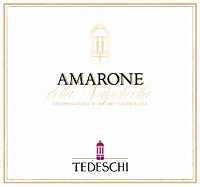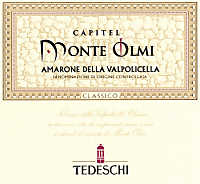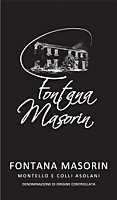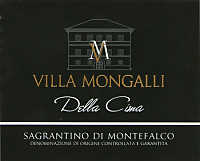|
Sensorial testing is a very important practice for knowing and understanding
wine. A concept already expressed in the past in these pages, something
reasserted again in this occasion. This does not mean the appreciation of a wine
can be done by the strict practice of tasting only, as appreciation - in its
many forms - is, after all, a purely subjective matter. A wine can certainly be
appreciated in informal and friendly occasions as well, in company of friends
while enjoying the occasion and the moment itself, of course, provided this is
done in moderation and never with a shameful abuse. When a wine is being
evaluated according to the sensorial tasting technique, in an analytic and
critical way, it is however fundamental to abandon the emotional state typical
in informal and friendly situations. A fundamental condition is in fact a state
of isolation from any external factor which could disturb concentration
and attention towards the content of the glass.
Sensorial tasting is, with no doubt, the use and application of specific methods
and techniques in order to evaluate and determine the characteristics and
quality of a wine. It should be considered that sensorial evaluation is not a
discipline concerning wine only, but any element - therefore not only food and
beverages - having the property of stimulating senses, every type of sense. The
practice of sensorial tasting, although it is mainly made of technical factors,
it is not based on the analysis of the elements involved in the definition and
constitution of the result only. Technique, every technique, requires three
specific conditions in order to be useful and to give concrete and tangible
results. First of all, it is necessary to know the technique, the factors and
the methods making it, therefore - a fundamental step - it is required to
understand it. Understanding a technique therefore implies the condition of
having proper requirements and competences allowing the learning and
understanding.
After having learnt and understood the technique, in its theoretical form, it is
indispensable to have the capability of rendering the theoretical concept in its
practical form, that is the capacity of knowing how to use the concepts
according to the real circumstance of use. For example, as for wine, gustatory
evaluation technique is based on the same theoretical principles, however their
application differs according to the style of wine to be evaluated. The
evaluation and determination of balance, for example, radically changes in case
of a white wine or a red wine. Finally, the capability of knowing how to
determine results and, therefore, knowing how to understand and interpret the
result in order to get consistent and defined information and reference models.
The latter aspect, representing, as a matter of fact, the primary goal of a
technique and its use, allows not only the definition and evaluation of the
sample to be examined, but also - and in particular - the possibility to compare
it with other samples in order to determine differences and peculiarities of
each of them.
Learning and understanding a technique, like already said, is done thanks to the
preliminary knowledge of the elements to which the technique refers to. In other
words, in order to understand arithmetic and mathematics, it is indispensable
to know what numbers are. Likewise, in order to taste a wine in a profitable
way, it is indispensable to know what is wine, what are the elements and
conditions involved in production and, not less important, how it is produced.
Knowing how to taste a wine does not mean being a wine maker, vintner or
agronomist, likewise, being a wine maker, vintner or agronomist does not mean
being a taster. It is however indispensable for a wine maker to know the
techniques of wine sensorial tasting - his job is, after all, about making the
fundamental element of the tasting - and it certainly is not indispensable for a
taster to be a wine maker. These roles evidently have different goals, but it is
however undeniable that a good taster must have the knowledge, a good knowledge,
about wine making and viticulture.
|
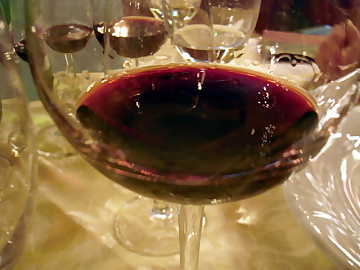 | |
| Wine sensorial tasting, besides a glass
and technique, also requires knowledge and strategy | |
|
However, sensorial tasting is not a practice in which improvisation, even worse,
superficiality, can bring to reliable results, it is however undeniable
curiosity, an innate predisposition and talent, are elements of remarkable
value. If it is true in order to profitably understand and use the techniques of
sensorial tasting it is fundamental the knowledge of wine and its production,
likewise it is equally important to know the tools allowing its application,
such as the glass and the organs of sense. Besides this, it is also fundamental
to understand the role of physical and environmental factors strongly
influencing the perception of each stimulus, such as, for example, temperature
of wine and environment. A red wine, tasted at a temperature of 10 °C, will
bring to a result very different from the same tasting done at a temperature of
18 °C. The result is also affected by the specific qualities of wine, such as
astringency, acidity and alcohol.
The practice of sensorial tasting unavoidably requires the knowledge and
understanding of other disciplines and competences. It is not enough to know the
techniques to be used, one must - among the other things - know, and not
superficially, the physiology of taste and senses, the characteristics of
grapes, the role of environment and viticultural conditions, viticultural and
wine making techniques and how they can affect production in function of all the
other elements. For example, the same grape can produce extremely different
results according to the place and condition in which it has been cultivated,
viticultural methods used during the course of the season, meteorological
conditions and, last but not the least, how the grapes have been processed
during production. Cabernet Sauvignon, a grape known for making wine of good
structure and with deep and intense colors, can also make wines of medium body,
with a pale color and high transparency, in case it was cultivated in wrong
places and with high yields.
The study of auxiliary matters related to enology and viticulture - in any case
to be considered as fundamental - are of extreme importance for every taster.
Understanding the quality and characteristics of a territory and its grapes, has
in the practice of sensorial tasting, its primary application of study.
Likewise, this is equally important for every discipline related to wine: by
using sensorial tasting it is possible to test and evaluate different cultural
and wine making techniques, including environmental, ampelographic and
meteorological conditions. This latter aspect, has its maximum efficiency in
comparative sensorial tasting, by comparing wines produced with the same grapes
but cultivated and produced in different territories. Likewise, it is extremely
useful to compare wines of the same producer and belonging to different
vintages, as well as a wine of the same vintage and belonging to the same
territory, but produced by different wineries.
The two latter examples, are respectively defined vertical tasting and
horizontal tasting. To these should also be added - for the sake of
completeness - the so called diagonal tasting, consisting in the
comparative evaluation of wines belonging to the same style and territory, but
produced in different vintages and different producers. Diagonal tasting, as a
matter of fact, does not offer concrete chances of study, as the differences of
elements making the wines, style and territory apart, do not allow the
definition of a consistent model of study. The practice and usefulness of
comparative tasting - despite of its type - is in any case beneficial and
profitable for the study and preliminary knowledge of the characteristic
elements of the wine to be tasted. In other words, in case the wines to be
compared are all produced with grapes cultivated in sandy soils, the color
observed in the glass will be paler than the same grape cultivated in clay soil.
Time and practice give the taster an invaluable tool, something going beyond the
understanding and usage of techniques. Among them, two factors are particularly
useful and fundamental in order to do a profitable tasting: memory and
experience. In both cases, their development is not favored, like to say, by a
purely theoretical study of the matters, but by a practice done with commitment
and in a profitable way. To continuously exercising our skills by practicing
sensorial tasting is - as a matter of fact - the most important aspect in order
to acquire new elements useful to improve our experience and knowledge.
Experience and knowledge are presuppositions requiring a good memory: practicing
without learning - therefore, remembering - what has been done and what has been
perceived in a wine, makes the tasting useless for our education and skill.
For this reason, invaluable allies of the taster are paper and pen. Taking notes
of all the tasting done, what has been perceived, comments and thoughts about
the sensorial evaluation and how each element interacts with others, will allow
the taster to develop a proper and invaluable historical memory. Taking note of
our impressions and sensations perceived during the tasting, it is not however
the only type of memory beneficial to the taster. There is in fact a type of
memory that, for its nature, cannot take full advantage of writing and words:
sensorial memory and, in particular, olfactory memory. Remembering an aroma, a
smell, and being capable to quickly associate it with a specific wine, or a
territory, grape, wine making technique or environment, represents a remarkable
tool for every taster. This capability is obtained both by a personal talent,
but also - and in particular - by practice and training, last but not the least,
by a good level of concentration.
Concentration is a fundamental condition in order to get the best advantage from
sensorial tasting, not only for the understanding of techniques and the
improvement of the knowledge about the wine to be evaluated, but also, in
particular, for the determination of a reliable and useful result. For this
reason, the profitable practice of sensorial tasting provides for the adoption
of environmental conditions in order to favor the concentration without
interferences or disturbing elements. Concentration is obtained, besides by
favorable environmental conditions, by the taster's mental condition, by a
relaxed condition, while trying to not allow our thoughts - negative and
positive as well - to influence the evaluation and, therefore, the reliability
of the job. Likewise, the presence of disturbing sensorial elements, such as
perfumes and smell in the tasting room, making use of perfumes, having recently
consumed food or beverages, all represent elements of disturb, not only for the
concentration and the perception of sensorial stimuli.
Every taster, with time and practice, develops his or her own personal methods
and strategies, in order to make the work of tasting the most profitable
possible. Each phase of tasting, besides using technique, is also done by
adopting a very personal method of job, in particular for the evaluation and
recognition of wine aromas. In this sense, the awareness of the elements
identified in the appearance analysis, allow the taster to use methods and
strategies for each wine style. By seeing a red wine, for example, the taster
will use a different analytic approach than the one used for white or sparkling
wines. The most complex phase of sensorial tasting certainly is olfactory
evaluation, besides being the most interesting one. Having a strategy for the
recognition of aromas - including memory - allows to do the job in a short time.
For example, it is more profitable to start by identifying the family to which
the olfactory stimulus belongs to - such as flowers, fruits, vegetables or
tertiary aromas - instead of concentrating on the recognition of a specific
aroma. The same is also true for gustatory analysis and for taste-olfactory
correspondence.
|




